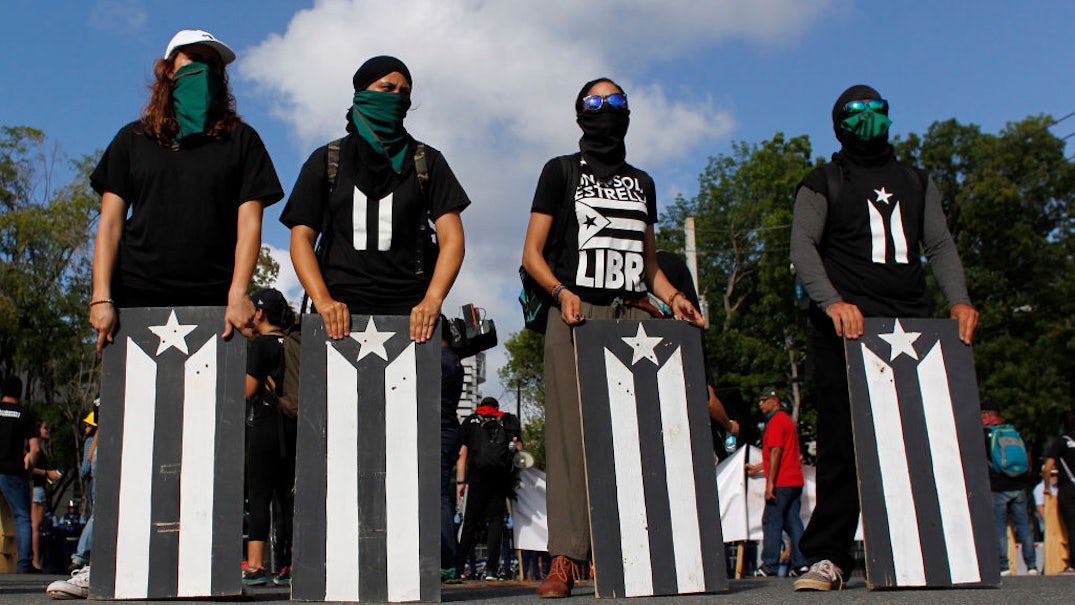Earlier this month, a Puerto Rican man was denied a rental car by Hertz for not presenting his passport at the counter. Despite explaining that, as a U.S. citizen, his Puerto Rican driver’s license should be sufficient, Hertz declined to accept it because they were not aware that Puerto Rico is in fact part of the United States. As a native Puerto Rican, I’m all too familiar with that misconception — and with the mainland United States’ general lack of understanding of the island’s politics and history.
Neither a state nor an independent entity, Puerto Rico’s status has long been a topic of debate. To understand this complex dynamic, I spoke with Ángel Collado Schwarz, a Puerto Rican historian who specializes in Contemporary Latin American History. He is the founder and host of Fundación Voz del Centro, a radio show that explores the history, culture, and society of Puerto Rico and the Caribbean. His latest book, Truman y Puerto Rico: el origen de un proyecto descolonizador fallido, is about the relationship between Puerto Rico and the Truman administration.
Before assessing Puerto Rico’s political status, Collado Schwarz says, we first have to define what Puerto Rico is. He describes the island as a Spanish-speaking Latin American nation colonized by the Spanish and later invaded and re-colonized by the United States following the Spanish-American War of 1898.
After Puerto Rico was colonized by the US, the Supreme Court issued a series of decisions, known as the Insular Cases, to determine how the relationship between the United States and its newly-acquired territories would work. As Collado Schwarz explains, “In the Insular Cases, the Supreme Court decides and defines that Puerto Rico is a non-incorporated territory that belongs [to] but is not part of the United States, and [the Supreme Court] are the ones who define a non-incorporated versus an incorporated territory.” Incorporated territories, like Hawaii and Alaska, were on a path to statehood and thus would be afforded all constitutional guarantees.
In contrast, inhabitants of unincorporated territories, like Puerto Rico, the Philippines, and Guam, were only given fundamental, not all, constitutional rights. Gustavo Gelpí, a former chief district judge in the district of Puerto Rico, explained in an article for The Federal Lawyer some of the differences between incorporated territories and the island: “In 1903 and 1922, the Court held that citizens of the unincorporated territories of Hawai‘i and Puerto Rico were not entitled to indictment by grand jury nor trial by jury, as these were not fundamental rights. Following in these footsteps, in 1924, the Puerto Rico Supreme Court, whose members themselves were presidential appointees at that time, went so far as to hold that the Nineteenth Amendment, which grants suffrage rights to women, was not a fundamental right. Hence, women in Puerto Rico were not entitled to vote at the time.” Puerto Ricans were eventually granted US citizenship in 1917, after former President Woodrow Wilson passed the Jones Act. To this day, however, residents of the island cannot vote in US presidential elections nor do they have voting representation in Congress.
So where does that leave Puerto Rico now? Collado Schwarz lays out the potential status options for Puerto Rico’s future: the status quo, sovereignty, and statehood. Sovereignty, which would grant Puerto Rico complete authority over its government, is Collado Schwarz’s favored outcome. But he notes that it would require a Puerto Rican leader who is capable of negotiating effectively with officials in Washington, DC. “We need a leader who really understands what we’re talking about and would open negotiations and conversations with the United States. We don’t have that because our leaders believe in the colonial status or looking for the impossible dream of becoming a state.” A look at the island’s history of independence movements shows the idea has often been met with resistance. In the 1937 Ponce Massacre, for example, a peaceful civilian march led by the independence party, then known as The Nationalists, resulted in the deaths of 19 civilians and two police officers. Four decades later, in the 1978 case of Cerro Maravilla, police brutally murdered two members of the Nationalist Party.
What about the possibility of statehood? Collado Schwarz says, “The United States has been very clear since day one that Puerto Rico was not going to become a state.” Now, the likelihood of statehood seems even more unlikely. As Collado Schwarz points out, “The United States is going through a very difficult period where the country is being polarized in two groups.” When looking at Puerto Ricans’ views on statehood, there is no substantial evidence that indicates its people want to become a state either. Since 1967, the Puerto Rican government has held five referendums — also known as “plebiscites” — on the question of status. In the first three plebiscites, the majority of votes favored the status quo. In the last two plebiscites, held in 2012 and 2017, statehood won. However, in 2012, almost 30% of voters left the question blank or cast invalid votes and the results were protested because of their ambiguity. In 2017, only about 23% of Puerto Ricans participated due to a boycott condemning the use of public funds for plebiscites and the results were not recognized by Congress.
According to Collado Schwarz, Puerto Rico’s only options are to continue as a colony or to become a sovereign nation. Ideally, he says, Puerto Rico would be “a sovereign country where you would have the [governing] powers in Puerto Rico, not in Washington, and where Puerto Ricans could develop their own economic model in close association with the United States.” But, according to Collado Schwarz, real change requires a long-term vision. He closed the interview by saying: “If you study the history of Puerto Rico, you see everything that we’ve done has failed long term because it was done only short term and I think we need a plan.”




























